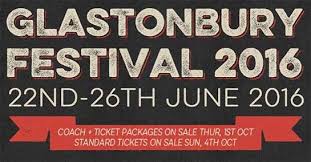The British public’s desire to gather in muddy fields shows no signs of waning – but how is the festival industry catering for our evolving tastes?

Last year, it was estimated that 14 million UK adults were thinking of attending a festival. To meet this demand, the choices facing the pleasure-seeking rabble are greater than ever. Whether you want to see Coldplay headline Glastonbury for the umpteenth time, learn to knit at Camp Bestival or share a jacuzzi with Albert Hoffman-eulogising strangers at Shambala, there have never been so may options.
“When Bestival started [in 2004] we were sort of out on our own with just a few others, but now we’re in a market with hundreds all jostling for space, which is fun and stressful in equal measure,” says Rob da Bank, DJ and founder of the Bestival, Camp Bestival and Common People festivals.
Da Bank also co-created the Association of Independent Festivals (AIF), which this week held its first Festival Futures roadshow in Brighton. The aim was to gather the brightest minds in the independent festival game, chew over the minutiae of their businesses and reflect on the issues that will be affecting festivals in the future. Here are a few of the key trends that will affect the festivals to come.

The AIF’s research in 2014 found that 58% of people cite overall experience and atmosphere as the main reasons for their purchase of a festival ticket, and that just 7% said it was the headlining acts. This adds credence to the theory that participation is going to be the prevalent theme in modern festival-going. It can take many forms, from Burning Man’s inclusion of participation as one of its 10 Guiding Principles, to Southend’s Village Green using local schools and community groups to break the world record for the longest line of bunting.
“There is a desire to go from just being a spectator to wanting something more,” says Fred Fellowes, organiser of Secret Garden Party. SGP started life as a one-stage, 1,000-person carve up in 2004, and now sees 22,500 spacemen and women descend on Abbots Ripton, Cambridgeshire, each year. Along with Shambala and Bestival, it was one of the UK’s pioneers of participation-led events.
“A really great party engineers scenarios where people will talk to each other, despite being English, reserved, and terminally embarrassed or shy,” says Fellowes. “The best way to engineer that is by getting people involved, giving people ownership of the party, making them feel that their involvement is what’s making the evening go off with a bang.”
The food revolution
Modern festivals, in their high-falutin’ roles as societal microcosms, reflect the country’s current obsession with all things culinary.
No festival better represents this than Wilderness, which since 2011 has been the benchmark for forward-thinking food concepts. “We started inviting a few chefs to host long table banquets,” says Wilderness food programmer Clare Isaacs. “The banquets were so popular we began to invite more chefs and restaurants, each with their own space to create something bespoke for the festival.”
This year the festival is introducing a spoken-word venue called Kitchen Tales. Isaacs is curating it with Angela Hartnett, and they’ve invited 15 chefs, writers, producers and campaigners – “all of whom are coming to share their particular foodie story”.
Wilderness is at the end of the scale, but Mark Laurie from the National Caterers Association (NCASS) is nigh-religious in his belief that street food will redefine how we eat at festivals in years to come. He says that there are between 2,000 and 3,000 more street food vendors in the UK than five years ago, and that the valuing of the east London-based Street Feast at £35m shows that it’s no flash in the wok.
His tip for the next big street food? “Soul food – American and Japanese.”
Ageing rockers
“There is a direct link between the mass closure of grassroots music venues and the age of festival headliners,” says Mark Davy of the Music Venue Trust, which seeks to represent and protect grassroots music venues. If you think he’s exaggerating, consider the following facts: the average age of a major festival headliner in 1995 was 30; in 2015 it was 45. In 1995, it took an average of seven years for a band to go from debut album to headlining a major festival. It now takes 17. There were 136 grassroots music venues that traded in London between 2007 and 2015. Only 88 remain.
Davy freely admits there are a raft of other contributing factors – not least the increasing age of the average festival attendee – but there’s a clear link. “Bands are doing shorter tours. As a result, there’s a lack of fanbase being built up. An average tour length is now 12 shows when it used to be 30. So for each of those nights, there are 300 people that haven’t bought a ticket to your band, and as a result, festival promoters are less likely take a risk on them.”
So if you can’t bear the thought of seeing Pete Townshend doing that infernal windmill thing on another windblown festival stage, you know what to do.
Virtual reality

Read more at the Guardian




Be the first to comment